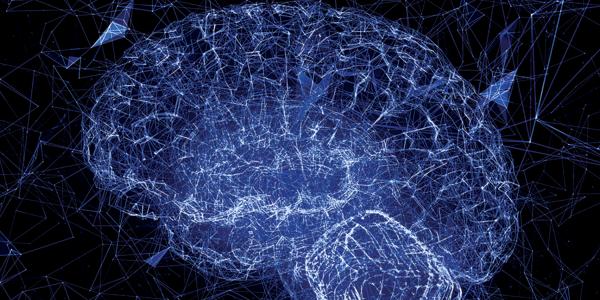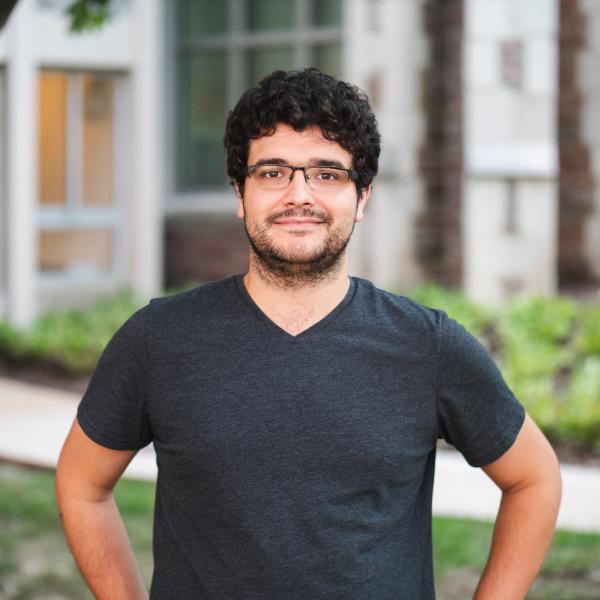Quantum mechanics entails clearly defined units and rules, so it isn’t really disordered. However, there is a sense of disorder that has to do with the complexity of quantum mechanics – and that’s actually really important for how we can apply it.
When physicists say “disorder,” we’re probably talking about uncertainty and entropy. The Heisenberg uncertainty relation is one of the first and most surprising things you learn in quantum mechanics. Basically, you can’t know the position and momentum of a particle at the same time. In a classical world, we can know where something is and how fast it’s going – of course we can; we do that all the time – but that’s impossible to do exactly in quantum mechanics. Even if you know everything you can about a quantum particle, there are still unknowns. The disorder is built into the structure of the theory in the form of uncertainty.

The simplest quantum building block is just one quantum system, what I’ll refer to as a quantum bit or qubit. When I look at the position, momentum, or some other quantity of any qubit, I’ll see randomness in the measurement because the qubit embodies the uncertainty principle. So, while the quantum state of a qubit can be exactly a specific combination of its two states – for example, state zero plus state one – a measurement of its state will randomly give zero or one with equal probability because the qubit occupies a superposition of the two states. Disorder!
That’s how we think about disorder in one quantum system or one simple quantum state, but quantum mechanics becomes really interesting and powerful when you start talking about larger quantum systems. That’s what people are excited about when they hear the word “quantum,” and it fundamentally has to do with the idea of entanglement.
Imagine taking two or three quantum bits or more and writing down one quantum state to describe them all together. The quantum states you write down have to include every possible combination of every state for every qubit. Very quickly, the number of combinations becomes fantastically large. By the time you reach 268 qubits, the number of terms you’d need to write down is larger than the number of particles in the observable universe.
At some point you have to say, okay, it’s not possible to write down exactly what it is because it’s unfathomably complex, even though there’s no disorder. And that’s what’s so exciting about quantum mechanics. We’re describing something so complicated that if you look at it wrong, you just see disorder. But if you look at it right, you might be able to harness that incredible complexity in some useful way. That’s the basis of the power of a quantum computer.
Right now, the most beautiful way to harness that complexity is something called Shor’s algorithm, which could use a quantum computer to factor really large numbers. It’s a very clever way to get these quantum states to interfere so the answer is produced more effectively with a quantum computer than with a classical computer. Even though there’s a lot of uncertainty or disorder – there’s this insane complexity that we can only just touch – everything lines up in a certain way so that you see an answer you need more often than not. By harnessing the disorder, we’re able to do something that would have taken millennia with even the fastest supercomputers.
Building the hardware for quantum computers is a huge challenge, but finding clever ways to use them is an equally large challenge we’re facing now. In the last decade or two, we’ve been slowly getting control over quantum complexity and increasing the number of quantum bits that we can reliably initialize and control. Our goal with the new Center for Quantum Leaps, which we’re developing as part of the Arts & Sciences Strategic Plan, will be to find places where we can use the quantum advantage to benefit researchers at WashU.
There’s a whole range of applications – in fundamental physics and math, new materials and devices, and biomedical and life sciences. For example, in physics, we have a team collaborating on the search for dark matter, and we’re using quantum entanglement to reduce noise and speed up the search. Researchers at the School of Medicine are interested in challenges associated with drug discovery that involve computationally intensive examinations of how drugs interact with some target protein. A quantum computer can more efficiently handle the complexity of drug interactions at the chemical level that involves many atoms, electrons, and orbitals. This is just the beginning. Across disciplines, we’re expanding our scope and looking for opportunities to harness quantum technologies to advance research using the quantum advantage.
Professor Murch’s research addresses atomic, molecular, and optical physics, condensed matter physics, and fundamental questions in quantum mechanics.
This article was excerpted from a longer article, found here.





